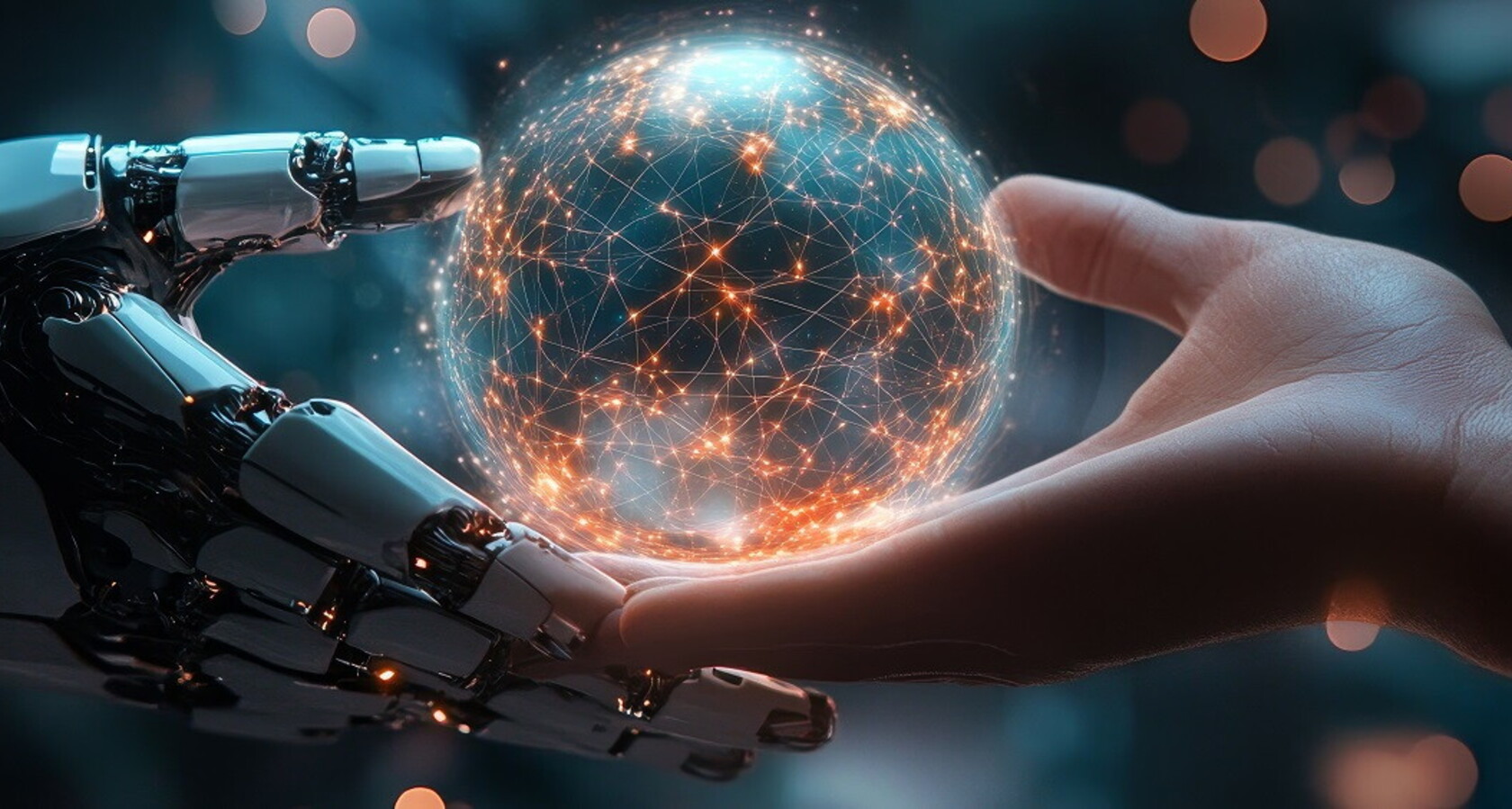
Lights and Shadows of the New Frontier
Revolution
The impact of Artificial Intelligence has been overwhelming from the start: the strengths and weaknesses of a discovery that is changing the world.
12 minC
hatGPT sparked overwhelming curiosity when Open AI first released it at the end of 2022. For the first time, an artificial intelligence software was capable of holding a credible conversation in multiple languages with real people. Within five days, a million users began experimenting with it, asking it to perform tasks that, until the day before, were considered beyond a computer’s reach: summarizing texts, providing quality translations, and explaining complex concepts in simple terms. And they also asked it to create video scripts, invent stories for children and adults, solve mathematical problems, and even write code in various programming languages.
ChatGPT captivated the public with its ease of use and extraordinary capabilities. However, 2022 was just at the beginning. Two years on, the system has evolved impressively: its “knowledge base,” which initially cut off in 2021, has been updated, and it can now search for missing information. It has also become multimodal: it can “see” and generate images. It can be queried via voice, without typing. Its processing capabilities have improved, making it even more “intelligent.” And this is just the beginning: according to Sam Altman, CEO of OpenAI, the company that developed it, ChatGPT 5, expected in 2025, will be an impressive leap forward: the new chatbot will be significantly more powerful than the current one (“100 times more powerful”). Moreover, OpenAI is no longer alone: other models have emerged in its wake, such as Claude by Anthropic (a company founded by two Italian-Americans who had left OpenAI), Gemini by Google (initially called Bard), and Copilot by Microsoft (based on OpenAI’s model), just to name the best-known.
In a short time, AI has woven itself into the lives of millions, leaving a significant mark on the corporate world. Companies of all sizes are now experimenting with generative AI and integrating it into their processes.
However, alongside the excitement, doubts have surfaced about the quality, reliability, and potential impact of AI. Chief among these concerns is employment, with many jobs at risk of being replaced by AI. But the issues don’t end there: AI is also being harnessed for more sinister purposes. Cybercriminals are leveraging it to enhance their attacks, crafting more convincing phishing schemes and designing malware that can slip past corporate security systems.
Beyond this, reckless use of AI could lead to societal shifts, enabling mass surveillance and the spread of invasive facial recognition technologies. It’s no coincidence that the EU recently passed the AI Act, regulating the development and use of AI across Europe, even as the U.S. and China push ahead in technological advancements while we Europeans focus on regulation.
The Numbers Behind AI
According to research by Microsoft and The European House - Ambrosetti, AI adoption could add EUR 312 billion to Italy’s GDP—about 18.3 percent—without increasing working hours. This represents a long-awaited productivity boost.
Alternatively, AI could free up 5.7 billion hours of labor, equal to the eight-hour workdays of about 3.2 million Italians. While Microsoft’s investment in OpenAI (over EUR 13 billion) may make these figures seem overly optimistic, other studies also highlight global enthusiasm for AI, despite varying estimates. Bloomberg projects the generative AI market will reach USD 1.3 trillion by 2034, while Fortune estimates it at USD 2.74 trillion by that year.

But how many companies are actually adopting AI at this stage? The McKinsey report, The State of AI in Early 2024: Gen AI Adoption Spikes and Starts to Generate Value, shows that, globally, 72 percent of firms make some use of the technology. This is the proportion of companies that have embedded AI into at least one business function. However, the figure also includes an older vintage of AI applications, such as the predictive maintenance solutions widely used in manufacturing or financial forecasting systems in financial institutions. If we limit the analysis to generative AI, McKinsey reports current adoption at 65 percent, still a high figure. Marketing is the area where generative AI is most widely used, helping to create product listings, descriptions, and firms to create personalized online advertising campaigns quickly and inexpensively. Generative AI is highly valued is in helpdesk and customer support: it excels at solving simple problems, so much so that many support companies have introduced AI into their call centers. In some of these call centers, AI supports human operators, while in others, it has almost entirely replaced them.
Over time, more extensive adoption is expected in other areas: human resources, to speed up candidate screening and automate workflows (although ATS, or Applicant Tracking Systems, have been in use for years), and in the development of new products. We already see AI embedded into numerous solutions for both B2B and B2C sectors: machine translation systems, AI-based video generators, cybersecurity solutions, and platforms for publishing content across multiple social networks.
Risks and Benefits of a Rapidly Evolving Technology
Generative AI is best known for its edge in terms of efficiency and speed. Proper implementation increases productivity, certainly, yet this is not the only benefit to consider. In Western countries, the population is rapidly aging while birth rates are in decline. One result is a widening skills mismatch, making it difficult to align the supply of skills with the demand for labor. In practice, companies are looking for people with specific skills (mainly in STEM, i.e., Science, Technology, Engineering, Mathematics), but these skills are scarce among candidates. The use of AI could help train professionals more quickly, as well as enhance existing reskilling and upskilling programs aimed at providing workers with the skills needed in today’s professional landscape.
AI will undoubtedly have a significant impact on employment. Some jobs, like toll collectors, have disappeared entirely, and roles such as cashiers could follow. Other professions, like financial advisors, will be profoundly transformed by AI. The fear of being replaced is widespread—and justified. Data centers are feeling the pressure as companies begin laying off employees, citing AI as the reason. This is particularly evident in contact centers and industries like translation and localization, where AI’s growing role has sparked protests. In entertainment, AI is now being used for dubbing, with companies training it on actors’ voices, which has led to strikes. Once an AI is trained on a voice, the actor may no longer be needed. Actress Scarlett Johansson’s case is particularly notable: she threatened OpenAI with legal action after it used a copy of her voice for ChatGPT. Ironically, Johansson starred in Her, a 2013 film exploring precisely human-AI interaction.
What’s more, many technical roles, which are highly sought after today, might see their importance diminish. This is according to the leader NVIDIA, a company makes the chips that accelerate calculations for training and inferencing AI models and, with a valuation exceeding USD 2 billion, has become one of the most important companies in the world as a result. Its CEO, Jensen Huang has said that learning to program today could be a poor investment for the future. In his view, coding will be done entirely by AI within a few years. And programming likely will not be the only job impacted by this technology: even editorial content writing could be quickly replaced, and in some areas, this is already happening (after all, why pay even two euros for an article if you can get it for free?) Numerous news outlets and sports TV channels have long been using AI to write brief commentary articles on lower-tier sports leagues.
The Limits of AI and the Risk of a Bubble
While generative AI is an impressive technology that can solve many kinds of problems and enhance productivity, yet it is not without significant limitations. A main concern is its propensity to hallucinate: current AI models too often generate nonsense. This can happen when generating text or even when summarizing content. Formally, the output generated is flawless, but the content is not always accurate. In some cases, AI literally invents information—referred to as hallucinations—making its output unreliable. As a result, every generated text must be meticulously checked. Failing to do so could result in embarrassing situations, like that of Steve Schwartz, a U.S. attorney who decided to have ChatGPT draft documents for him. The AI fabricated a series of non-existent precedents, which seriously damaged the lawyer’s credibility. To address this problem, more companies are turning to Retrieval-Augmented Generation (RAG) solutions, a technology that verifies AI output to ensure its accuracy. A (free) tool to test how AI works in this context? Check out Google’s NotebookLM.
Another issue revolves around copyright. As of today, it is advisable for companies not to use public solutions like ChatGPT when working on confidential documents. The risk is that by feeding the AI these data, they may no longer remain confidential and could even be used to train the model itself, making them accessible to everyone. For this reason, those handling sensitive information should rely solely on proprietary solutions, developed in-house, and trained with their own data, to maintain full control over the information.
AI is still a developing technology, and a highly complex one. Simply purchasing software is not enough to embed it into processes. A long-term strategic approach is required. It is also essential not to get carried away by the hype: many hastily launched projects are doomed to fail. In fact, some big names have already made costly mistakes, like McDonald’s with its AI assistant tested at some of the chain’s drive-thrus. This is not unlike what happened with the internet: after the initial excitement, the dot-com bubble burst, overwhelming many companies. But in the medium to long term, those who adopted the right strategies reaped the rewards of their efforts.

